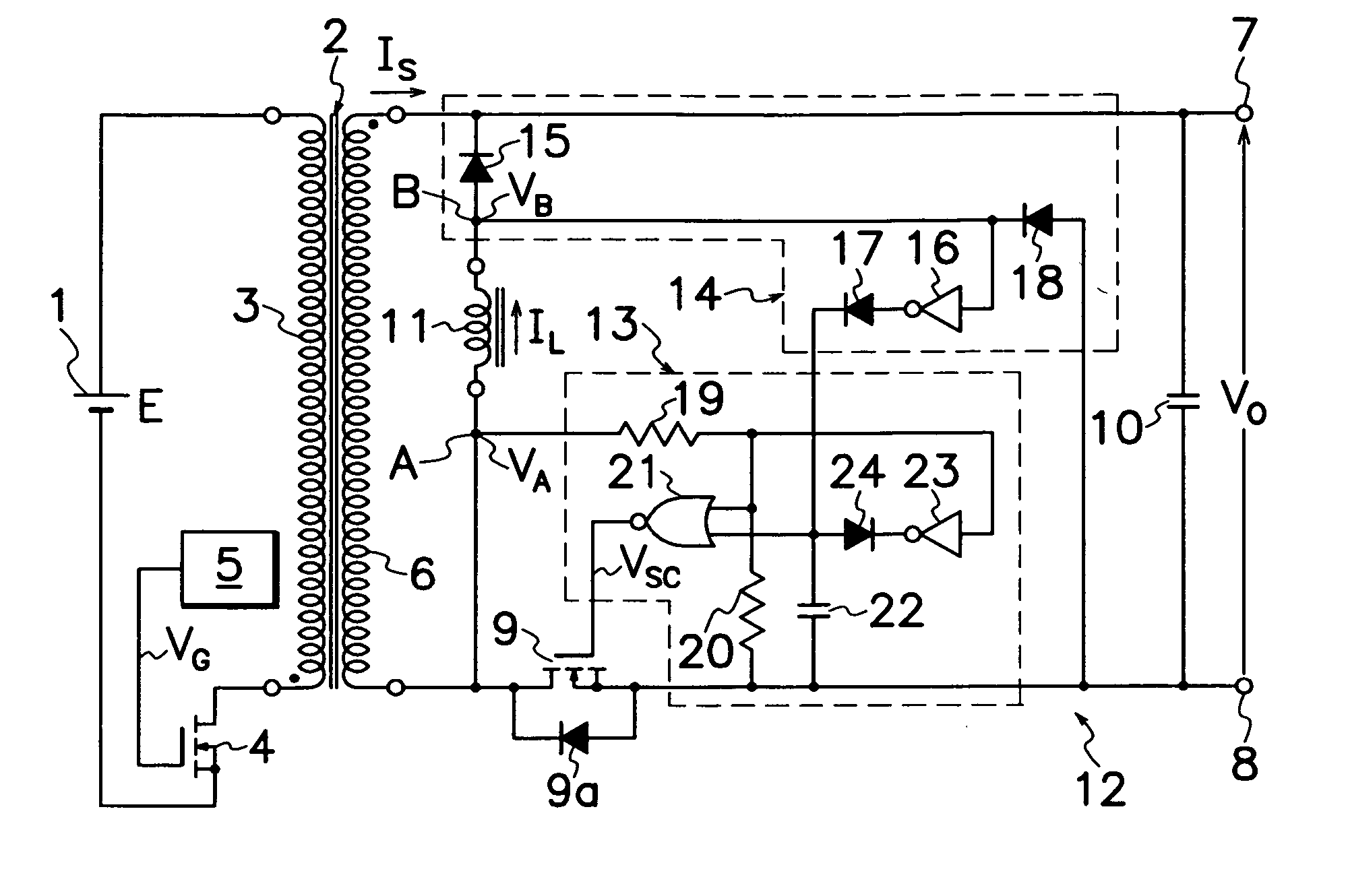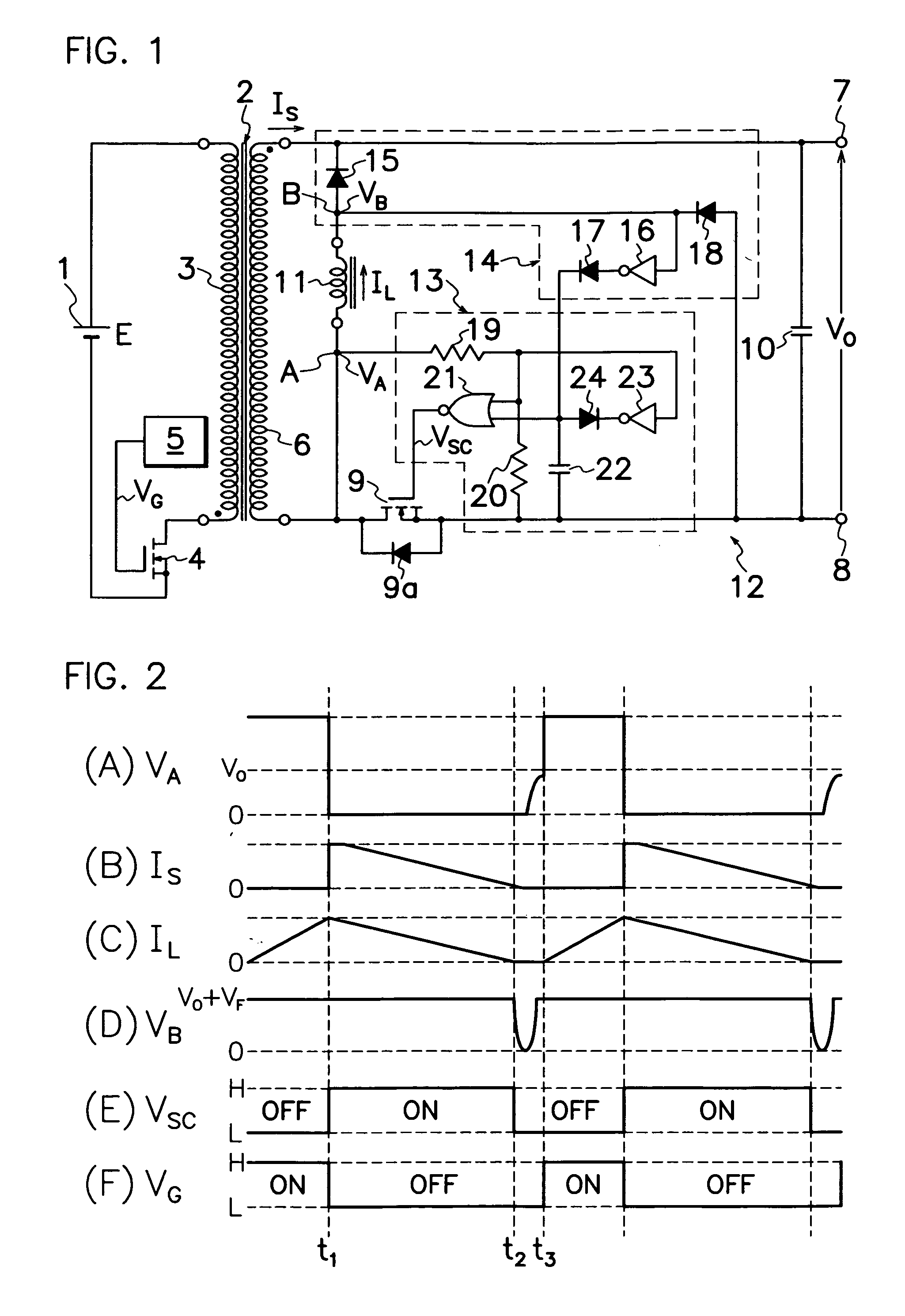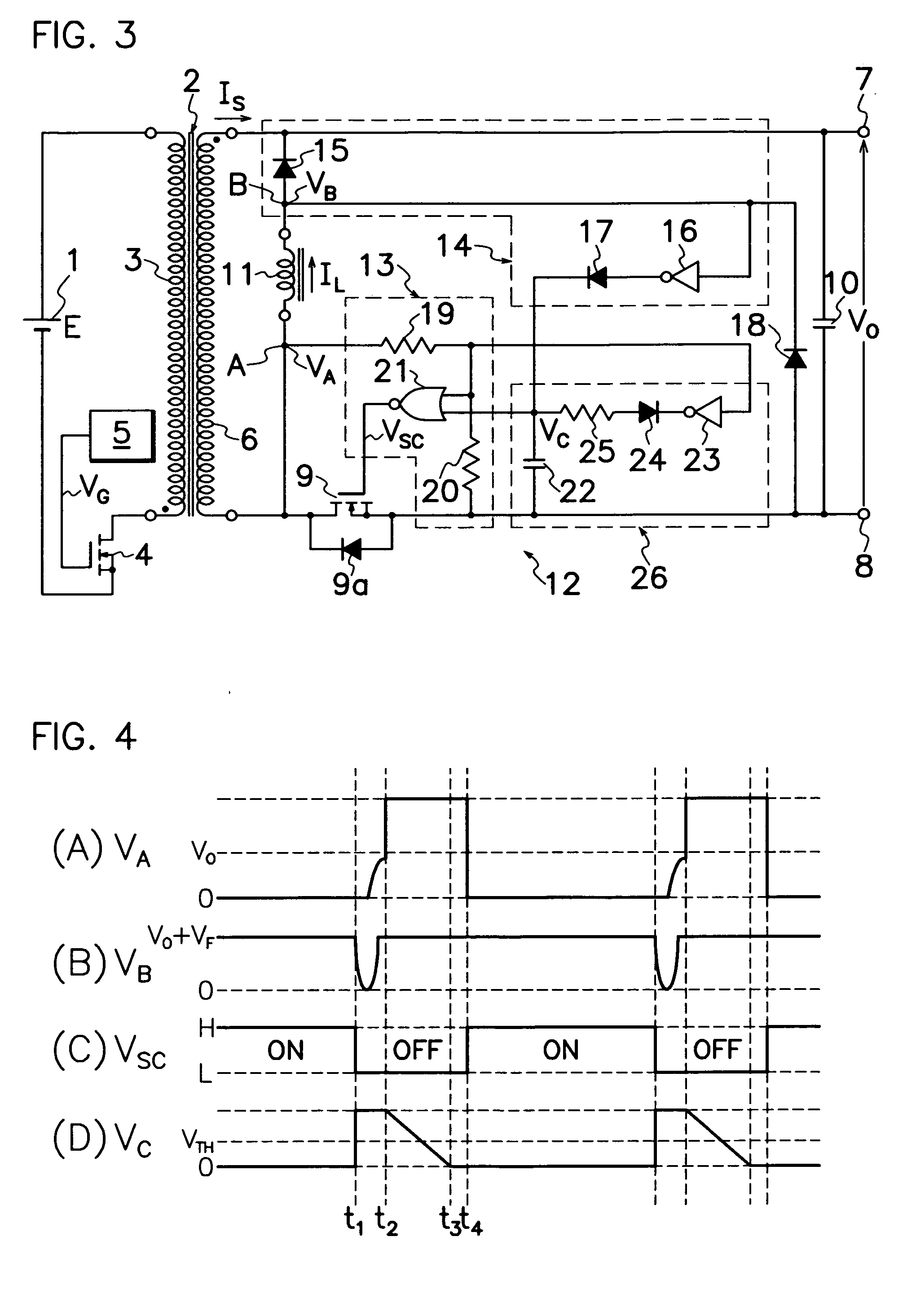Switching power source device
- Summary
- Abstract
- Description
- Claims
- Application Information
AI Technical Summary
Benefits of technology
Problems solved by technology
Method used
Image
Examples
first embodiment
[0023]FIG. 1 illustrates a first embodiment of the switching power source device according to the present invention. The device comprises a primary winding 3 of a transformer 2 and a primary MOS-FET 4 as a primary switching element connected in series to a DC power source 1; a primary control circuit 5 for controlling to turn primary MOS-FET 4 on and off; a secondary MOS-FET 9 as a secondary switching element for synchronous rectification and an output smoothing capacitor 10 connected between a secondary winding 6 of transformer 2 and output terminals 7, 8; a reactor or choke coil 11 connected in parallel to secondary winding 6 of transformer 2 for accumulating energy during the on-period of primary switching element 4, and a secondary control circuit 12 for synchronous rectification connected to reactor 11 and a control terminal of secondary MOS-FET 9. Secondary control circuit 12 serves to retain secondary MOS-FET 9 off during the period for accumulating energy in reactor 11, reta...
second embodiment
[0035] The first embodiment can be modified. By way of example, FIG. 3 illustrates a variation of the first embodiment as a second embodiment which comprises a resistor 25 connected between a junction of capacitor 22 and second diode 17 and fourth diode 24; and a retaining circuit 26 composed of capacitor 22, second inverter 23, fourth diode 24 and resistor 25. Retaining circuit 26 maintains second input terminal of NOR gate 21 at high voltage level to hold switch circuit 13 in inactive mode when voltage VA of narrow pulse width is applied on junction A of reactor 11 and dividing resistor 19. Other components are substantially similar to those in switching power source device of first embodiment shown in FIG. 1.
[0036] When a rated load not shown is connected to output terminals 7 and 8 in second embodiment shown in FIG. 3, energy release in reactor 11 is completed during the off-period of primary MOS-FET 4, and reset voltage VB on junction B falls from (VO+VF [V]) to nearly zero vo...
third embodiment
[0040]FIG. 6 shows a third embodiment of the switching power source device according to the present invention which comprises a secondary switching element or MOS-FET 9 of synchronous rectification connected between top end (marked black dot) of secondary winding 6 of transformer 2 and a positive output terminal 7; a tertiary winding 30 connected in series to secondary winding 6 of transformer 2; a first NPN transistor 31 as a reactor current detector; and a secondary control circuit 12 of synchronous rectification for controlling secondary MOS-FET 9. First NPN transistor 31 has a base terminal connected to one end of reactor 11; an emitter terminal connected to a junction of secondary and tertiary windings 6 and 30 of transformer 2; and a collector terminal connected to secondary control circuit 12 so that base terminal of first NPN transistor 31 detects electric current IL through reactor 11 to accumulate or discharge energy in reactor 11. Secondary control circuit 12 comprises a ...
PUM
 Login to View More
Login to View More Abstract
Description
Claims
Application Information
 Login to View More
Login to View More - R&D
- Intellectual Property
- Life Sciences
- Materials
- Tech Scout
- Unparalleled Data Quality
- Higher Quality Content
- 60% Fewer Hallucinations
Browse by: Latest US Patents, China's latest patents, Technical Efficacy Thesaurus, Application Domain, Technology Topic, Popular Technical Reports.
© 2025 PatSnap. All rights reserved.Legal|Privacy policy|Modern Slavery Act Transparency Statement|Sitemap|About US| Contact US: help@patsnap.com



